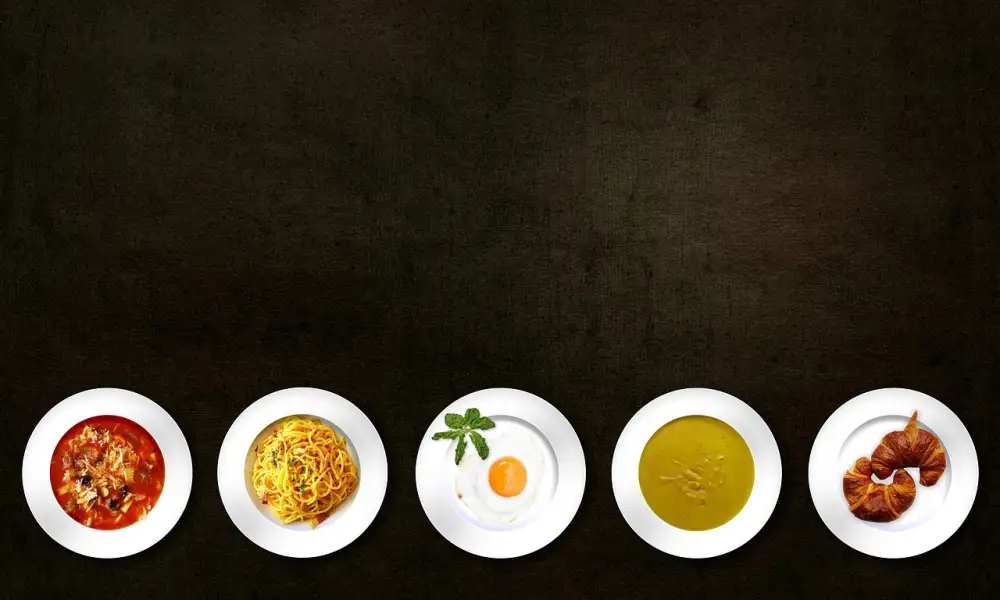Master the Art of Baking Homemade Bread: Mouthwatering Recipes for Every Craving

- Basic bread recipe for beginners
- Variations of bread recipes for different dietary preferences
- Tips for achieving the perfect loaf of bread
- Creative ways to use leftover bread
- Exploring different types of bread from around the world
- Health benefits of incorporating bread into your diet
- Expert advice on troubleshooting common bread-making issues
Bread, a timeless culinary treasure, has been a staple food in cultures across the globe for centuries. Its versatility knows no bounds, as it can be enjoyed in various forms - from fluffy loaves to crusty baguettes. Bread is not only a source of sustenance but also a canvas for creativity. Whether you prefer a simple slice with butter or an elaborate sandwich piled high with fillings, bread has something to offer everyone. Join us on a journey to master the art of baking homemade bread and unlock a world of delicious possibilities.
Basic bread recipe for beginners
For beginners looking to master the art of baking homemade bread, starting with a basic recipe is essential. Here's a simple and foolproof recipe to get you started:
Ingredients:
- 500g all-purpose flour
- 1 packet (7g) instant yeast
- 1 tsp salt
- 1 tbsp sugar
- 300ml warm water
Instructions:
1. In a large mixing bowl, combine the flour, yeast, salt, and sugar.
2. Gradually add the warm water while stirring with a wooden spoon until a sticky dough forms.
3. Knead the dough on a lightly floured surface for about 10 minutes until it becomes smooth and elastic.
4. Place the dough back into the bowl, cover it with a clean kitchen towel, and let it rise in a warm place for about an hour or until doubled in size.
5. Preheat your oven to 200°C (400°F).
6. Punch down the risen dough to release any air bubbles and shape it into your desired loaf shape.
7. Place the shaped dough onto a greased baking sheet or into a greased loaf pan.
8. Cover it again with the kitchen towel and let it rise for another 30 minutes.
9. Bake in the preheated oven for approximately 25-30 minutes or until golden brown on top.
10. Remove from the oven and let it cool on a wire rack before slicing.
This basic bread recipe is perfect for beginners as it requires minimal ingredients and equipment. Once you've mastered this recipe, you can start experimenting with different flavors and textures to create your own signature loaves of bread!
Variations of bread recipes for different dietary preferences
When it comes to bread, there are endless possibilities to cater to different dietary preferences. For those who prefer a gluten-free option, try using a combination of rice flour, almond flour, and tapioca starch in your bread recipe. If you're looking for a healthier alternative, whole wheat or multigrain flour can be used instead of all-purpose flour. For those following a vegan diet, replace eggs with flaxseed meal mixed with water as a binding agent. And if you're watching your carb intake, consider using almond or coconut flour instead of traditional flour. With these variations, everyone can enjoy the deliciousness of homemade bread while staying true to their dietary needs.
Tips for achieving the perfect loaf of bread
To achieve the perfect loaf of bread, follow these tips:
1. Use high-quality ingredients: Start with fresh flour, yeast, and water to ensure a flavorful and well-risen bread.
2. Knead thoroughly: Properly kneading the dough develops gluten, resulting in a light and airy texture.
3. Allow for proper proofing: Give the dough enough time to rise and double in size. This enhances flavor and improves the structure of the bread.
4. Maintain consistent temperature: Keep your dough in a warm environment (around 75°F) to promote fermentation and yeast activity.
5. Don't rush the process: Patience is key when it comes to bread-making. Rushing can lead to dense or undercooked loaves.
6. Score the dough: Before baking, make shallow cuts on top of the dough to allow for expansion during baking and create an attractive crust.
7. Use steam during baking: Place a pan of hot water in the oven or spritz water onto the bread before baking to create a crisp crust.
8. Invest in a good oven thermometer: Accurate temperature control ensures even baking and prevents over- or under-cooking.
9. Let it cool completely: Allow your freshly baked bread to cool on a wire rack before slicing into it. This helps retain moisture and prevents squishing.
By following these tips, you'll be well on your way to mastering the art of baking homemade bread!
Creative ways to use leftover bread
Creative Ways to Use Leftover Bread:
Don't let your leftover bread go to waste! There are numerous creative ways to repurpose stale or unused bread. One option is to make homemade croutons by cutting the bread into bite-sized cubes, tossing them with olive oil and your favorite seasonings, and baking them until crispy. These croutons can be used to top salads or soups for an added crunch.
Another idea is to transform your leftover bread into breadcrumbs. Simply toast the bread slices until they are dry and brittle, then pulse them in a food processor until you have fine crumbs. These breadcrumbs can be used as a coating for fried foods or as a topping for casseroles and gratins.
If you have a sweet tooth, consider making bread pudding. Tear the bread into small pieces and soak them in a mixture of milk, eggs, sugar, and your choice of flavorings such as cinnamon or vanilla extract. Bake the mixture until it sets, resulting in a warm and comforting dessert.
For a savory twist, try making a panzanella salad. This Italian dish combines chunks of stale bread with ripe tomatoes, cucumbers, onions, and fresh herbs. Toss everything together with olive oil and vinegar for a refreshing summer salad that makes use of leftover bread.
Lastly, if you have too much bread on hand, consider freezing it for later use. Slice the loaf before freezing so that you can easily thaw individual slices whenever needed. Frozen bread can be toasted or used straight from the freezer for sandwiches or toast.
With these creative ideas, you'll never waste another slice of bread again! Experiment with different recipes and flavors to make the most out of your leftovers while reducing food waste at the same time.
Exploring different types of bread from around the world
When it comes to bread, the options are endless. From baguettes in France to naan in India, each country has its own unique bread traditions. In Italy, you'll find crusty ciabatta and fluffy focaccia. In Germany, hearty rye bread is a staple. And who can resist a warm slice of Irish soda bread? From the soft and chewy pita bread of the Middle East to the sweet and buttery brioche of France, exploring different types of bread from around the world is like taking a culinary journey. So why not expand your horizons and try your hand at baking some international bread recipes? You might just discover a new favorite!
Health benefits of incorporating bread into your diet
Incorporating bread into your diet offers numerous health benefits. Firstly, bread is a great source of carbohydrates, which provide the body with energy. It also contains essential nutrients like fiber, vitamins, and minerals that are vital for overall well-being. Whole grain breads, in particular, are rich in fiber and can aid digestion and promote a healthy gut. Additionally, bread can be a good source of protein when made with ingredients like seeds or nuts. By choosing whole grain or multigrain options, you can lower the risk of heart disease and maintain a healthy weight. So go ahead and enjoy a slice of homemade bread knowing that it not only satisfies your taste buds but also contributes to your overall health!
Expert advice on troubleshooting common bread-making issues
1. Dense or Heavy Loaf: If your bread turns out dense or heavy, it could be due to insufficient kneading or not allowing the dough to rise properly. Make sure to knead the dough until it becomes smooth and elastic, and give it enough time to rise until doubled in size.
2. Overproofed Bread: Overproofing can lead to a collapsed or flat loaf. To avoid this, monitor the dough closely during the final proofing stage and remove it from the oven once it has risen adequately.
3. Cracked Top: A cracked top can occur when the surface of the dough dries out too quickly during baking. To prevent this, cover the loaf with a damp cloth or use an egg wash before baking.
4. Uneven Rising: Uneven rising can happen if there are temperature fluctuations in your kitchen. Ensure that your dough is placed in a warm, draft-free area for consistent rising.
5. Soggy Bottom: A soggy bottom is often caused by underbaking or placing the loaf on a cold baking sheet. Bake bread on a preheated baking stone or hot baking sheet for a crispy bottom crust.
6. Tough Crust: If your crust turns out tough, it may be due to insufficient steam during baking. Place a pan of hot water in the oven while baking to create steam and achieve a softer crust.
Remember, practice makes perfect! Don't be discouraged if you encounter these issues initially – keep experimenting and refining your techniques for delicious homemade bread every time.
In conclusion, mastering the art of baking homemade bread is a journey worth embarking on. From the basic recipe to the variations for different dietary preferences, there is a bread for everyone's taste. With some tips and expert advice, you can achieve the perfect loaf every time. Don't forget to get creative with leftover bread and explore different types of bread from around the world. Incorporating bread into your diet not only brings health benefits but also adds variety to your meals. So go ahead, experiment with different bread recipes and let your culinary creativity shine! Happy baking!
Published: 02. 01. 2024
Category: Recipes



